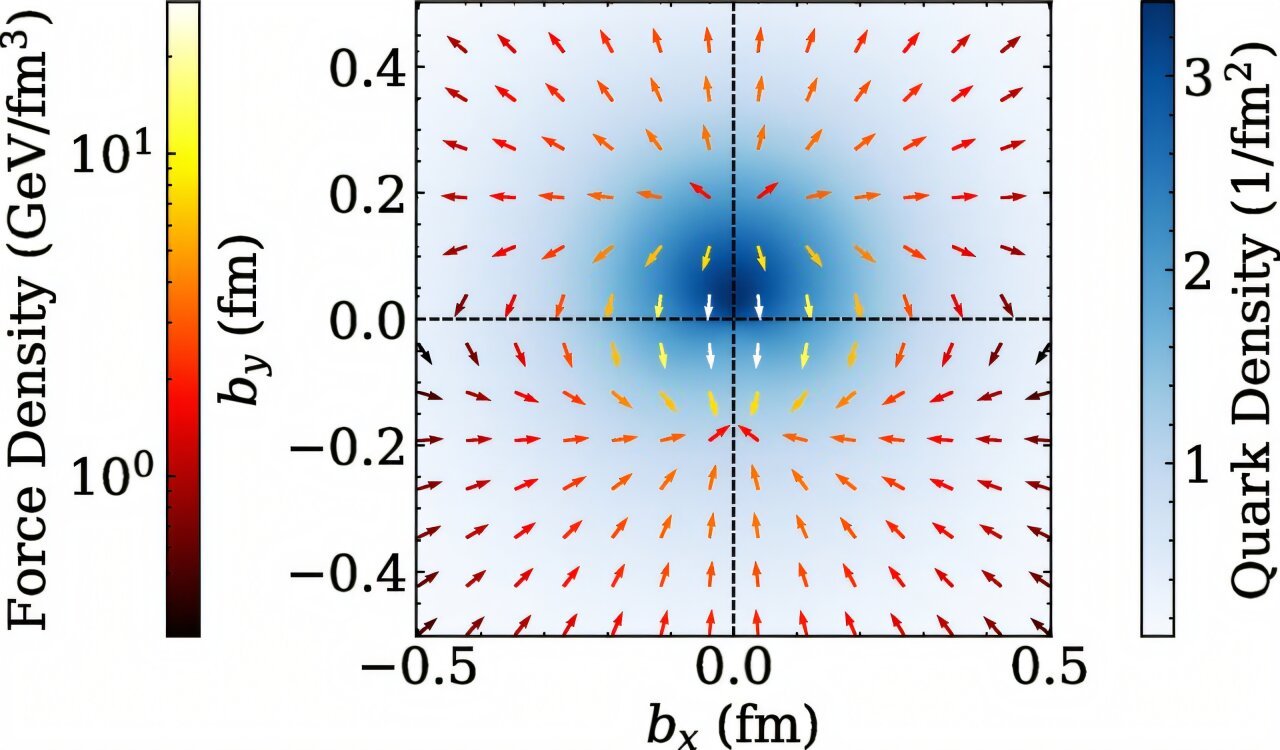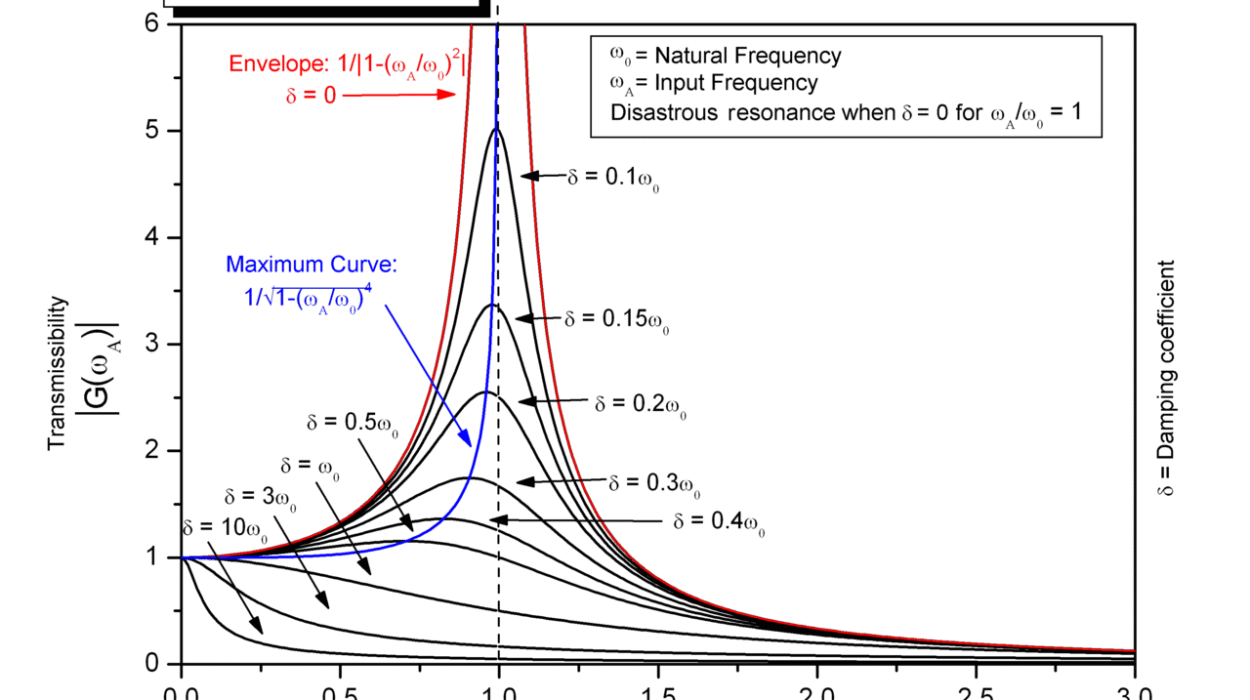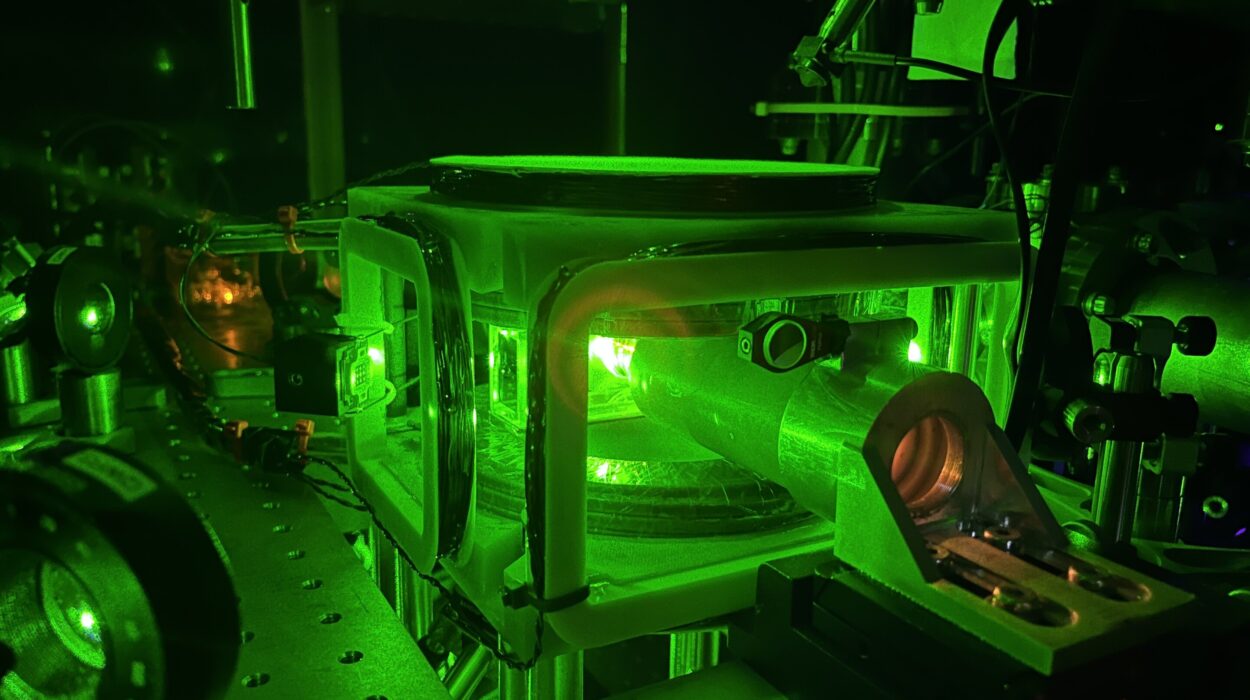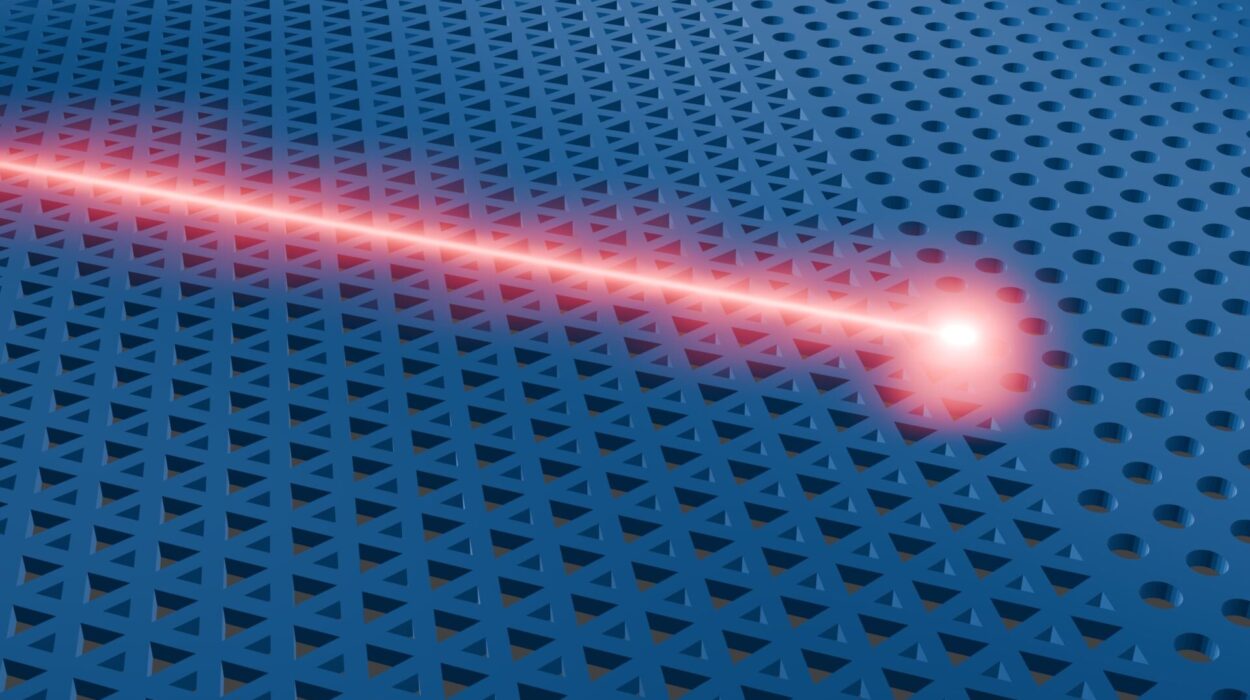In a groundbreaking study, scientists have now mapped the forces acting inside a proton, providing unprecedented detail on how the quarks—the fundamental building blocks of protons—respond when subjected to high-energy photons. This cutting-edge research, led by a team of international experts including scientists from the University of Adelaide, aims to deepen our understanding of the forces that govern the structure of sub-atomic matter, offering new insights into the natural world at its most fundamental level.
The Quest to Unlock the Secrets of the Proton
At the heart of this research is the desire to understand how protons, the particles found at the core of atoms, behave under extreme conditions, such as those encountered in high-energy particle collisions. Understanding the internal structure of protons is not only essential for advancing our knowledge of the strong force—the fundamental interaction that holds quarks together in protons and neutrons—but also for improving technologies in various fields, from particle physics to medical treatments.
The proton is a complex object made up of three quarks bound together by the strong force. This force is one of the four fundamental interactions in nature, and it’s responsible for holding quarks together within protons and neutrons. The strong force is incredibly powerful but acts over extremely short distances, making it challenging to study. Recent advancements in lattice quantum chromodynamics (lattice QCD), a computational technique, have allowed scientists to simulate and map these forces with remarkable precision.
Lattice Quantum Chromodynamics: A Powerful Computational Tool
The technique used by the team to simulate the internal dynamics of protons is known as lattice quantum chromodynamics. This powerful computational method involves breaking space and time into a fine grid, or lattice, which enables scientists to model how the strong force behaves across different regions inside a proton. By calculating the forces at various points within this grid, researchers can generate highly detailed force maps of the proton, revealing intricate details about how quarks interact with one another.
Associate Professor Ross Young, Associate Head of Learning and Teaching at the University of Adelaide’s School of Physics, Chemistry, and Earth Sciences, explained the importance of this technique in understanding the proton’s internal structure:
“We have used lattice QCD to map the forces acting inside a proton. This approach breaks down space and time into a fine grid, allowing us to simulate how the strong force—the fundamental interaction that binds quarks into protons and neutrons—varies across different regions inside the proton.”
These calculations and simulations resulted in what is possibly the smallest-ever force field map generated by any scientific team, providing a fresh perspective on the nature of the strong force and its impact on the proton’s behavior.
A New Era in Understanding Proton Dynamics
The findings from this research represent a monumental leap forward in our understanding of proton dynamics. Joshua Crawford, a Ph.D. student at the University of Adelaide, was instrumental in leading the calculations that formed the basis of this work. He, along with the team and their international collaborators, uncovered some striking results about the immense forces at play within the proton.
“Our findings reveal that even at these minuscule scales, the forces involved are immense, reaching up to half a million Newtons—the equivalent of about 10 elephants, compressed within a space far smaller than an atomic nucleus,” said Crawford.
These forces are staggering, and yet they occur within a space that is incredibly tiny, much smaller than what can be observed with the naked eye or even traditional imaging techniques. This work opens a new window into understanding the proton’s internal dynamics, which could have profound implications for fields like particle physics, medical science, and more.
The results of this research have been published in the Physical Review Letters, one of the most prestigious scientific journals, marking a significant milestone in the study of high-energy physics and the strong nuclear force.
Implications for the Large Hadron Collider and Particle Physics
One of the major areas where these findings will have an impact is in the study of high-energy collisions, such as those observed at the Large Hadron Collider (LHC). The LHC, located at CERN (the European Organization for Nuclear Research), is the world’s largest and highest-energy particle accelerator. It allows physicists to test theories about particle physics by colliding particles at nearly the speed of light, enabling them to study the interactions between fundamental particles, including protons.
Understanding the forces at play inside the proton will enhance our ability to predict how protons behave during these high-energy collisions, improving our interpretation of LHC experiments and refining our knowledge of the standard model of particle physics. As the research team continues to unravel the proton’s inner structure, it could lead to better methods of probing the fundamental building blocks of matter, potentially opening the door to new discoveries in particle physics.
Beyond Particle Physics: Applications in Medicine and Technology
Beyond the realm of fundamental physics, this research has practical applications in several cutting-edge fields, including medical technology. One prominent example is proton therapy, a highly advanced cancer treatment that uses high-energy protons to precisely target and destroy tumor cells while minimizing damage to surrounding healthy tissue. Proton therapy has become an increasingly important tool in treating cancers, especially in areas where traditional radiation therapies may cause harm to vital organs.
By improving our understanding of proton structure and behavior, this research could contribute to further advancements in proton therapy, making it even more precise and effective. Just as early breakthroughs in the understanding of light led to the development of modern lasers and imaging technologies, advancing our knowledge of the proton’s internal dynamics could pave the way for the next generation of scientific applications in both medicine and technology.
Bridging the Gap Between Theory and Experiment
The team’s groundbreaking study represents a significant step in bridging the gap between theory and experiment. The ability to make the invisible forces inside the proton visible for the first time helps to connect the abstract concepts of theoretical physics with the concrete data gathered through experimentation. This is not unlike how past generations of scientists, such as Thomas Edison, revolutionized the understanding of light to create technologies like the light bulb and the modern laser.
As Associate Professor Ross Young aptly put it, “Edison didn’t invent the light bulb by researching brighter candles—he built on generations of scientists who studied how light interacts with matter. In much the same way, modern research such as our recent work is revealing how the fundamental building blocks of matter behave when struck by light, deepening our understanding of nature at its most basic level.”
This study marks the beginning of a new era in our understanding of the proton, and as researchers continue to refine their models and simulations, we can expect to uncover even more about the behavior of the strong force and the quarks that make up protons.
Conclusion: A Breakthrough in Our Understanding of the Universe
The research team’s findings mark a paradigm shift in our ability to visualize and understand the forces acting inside the proton, a particle that is essential to the fabric of the universe. By applying lattice QCD and computational simulations to map these forces with unprecedented accuracy, scientists have opened new doors for high-energy physics research, medical applications, and more.
This breakthrough study helps to fill in the gaps in our understanding of how quarks and the strong force behave on the smallest scales, offering new insights that could help shape future technologies and provide answers to some of the most profound questions in science.
As we continue to push the boundaries of knowledge, the journey to explore the fundamental forces that govern the universe will no doubt lead to even more groundbreaking discoveries, transforming how we view the world at its most elemental level.
Reference: J. A. Crawford et al, Transverse Force Distributions in the Proton from Lattice QCD, Physical Review Letters (2025). DOI: 10.1103/PhysRevLett.134.071901






